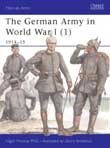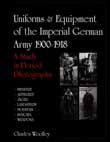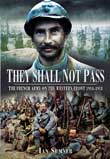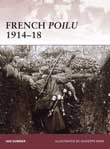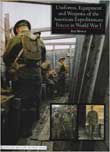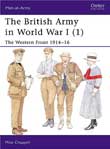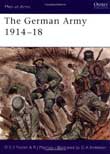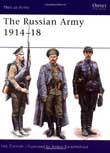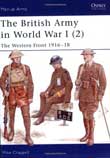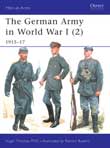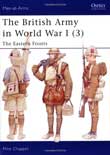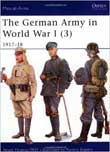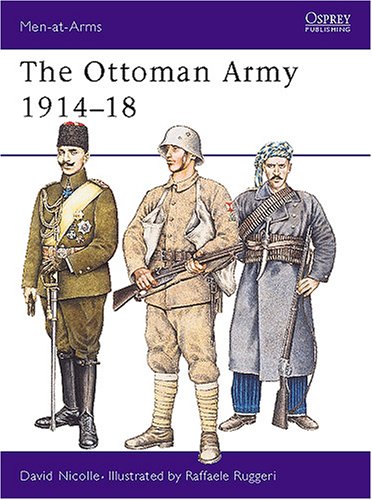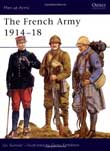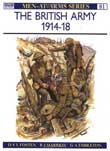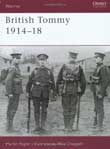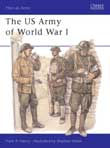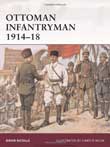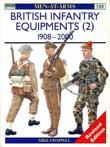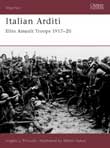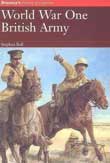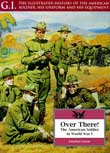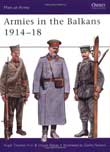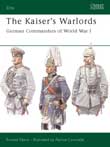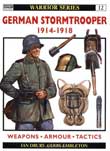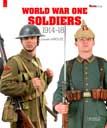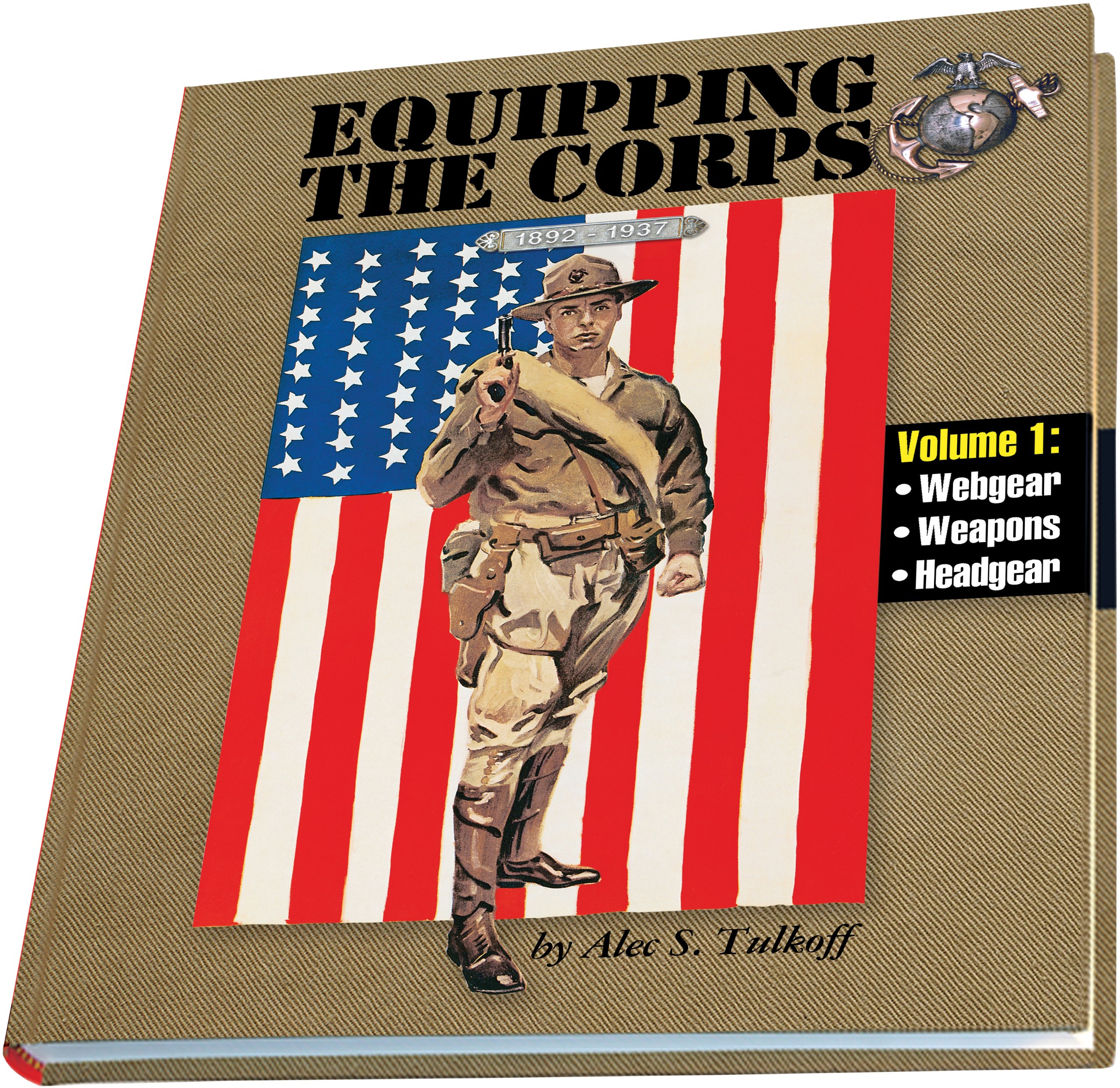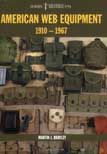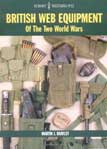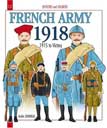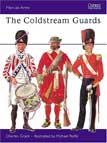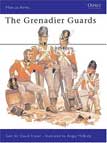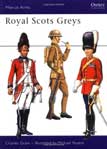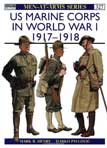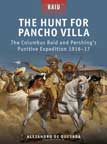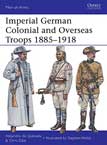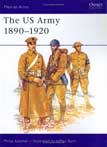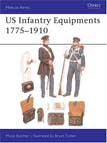

In August 1914 the mobilization of Imperial Germany's 800,000-strong army ushered in the first great war of the modern age - a war which still stands as the greatest slaughter of soldiers in history. That German Army is also the best example of a particular period of military thought, when virtually the whole manpower of the European nations was integrated into mass conscript armies, supported by several age categories of reservists and by dedicated industrial and transport systems. In this first of three volumes the author offers an extraordinary mass of information, in text and tables, illustrated by photographs and colour plates.
This outstanding book, contains over 500 never before published photographic images of Imperial German military subjects. This initial volume, of a continuing study, features formal studio portraits of pre-war dress and wartime uniforms of all arms. It also contains photo postal cards taken in the field of Infantry, Pionier, Telegraph-Signal, Landsturm and Mountain Troops, Vehicles, Artillery, Musicians, the Bavarian Leib Regiment, specialized uniforms and insignia, small arms close-ups, unmotorized transport, group shots and Balloon troops. Also included is a sixty page full-color uniform section reproduced from the rare 1914 plates by Major Arthur Schmidt of Infanterie Regiment Nr. 172, and shows that uniform color was still in evidence, mixed with the somber Feldgrau. Each photo caption has been carefully and completely researched affording the reader information not to be found in any other single source. An introduction to the complex army service commitments, a general uniform description and a selected bibliography make this a must volume for the serious military historian, collector, and World War I re-enactor.
This graphic collection of first-hand accounts sheds new light on the experiences of the French army during the Great War. It reveals in authentic detail the perceptions and emotions of soldiers and civilians who were caught up in the most destructive conflict the world had ever seen. Their testimony gives a striking insight into the mentality of the troops and their experience of combat, their emotional ties to their relatives at home, their opinions about their commanders and their fellow soldiers, the appalling conditions and dangers they endured, and their attitude to their German enemy. In their own words, in diaries, letters, reports and memoirs - most of which have never been published in English before - they offer a fascinating inside view of the massive life-and-death struggle that took place on the Western Front. Ian Sumner provides a concise narrative of the war in order to give a clear context to the eyewitness material. In effect the reader is carried through the experience of each phase of the war on the Western Front and sees events as soldiers and civilians saw them at the time. This emphasis on eyewitness accounts provides an approach to the subject that is completely new for an English-language publication. The author's pioneering work will appeal to readers who may know something about the British and German armies on the Western Front, but little about the French army which bore the brunt of the fighting on the allied side. His book represents a milestone in publishing on the Great War.
'Why,' the Kaiser enquired of Czar Nicholas in 1913, did he wish to ally himself with France when 'the Frenchman is no longer capable of being a soldier?' Indeed, during World War I (1914-1918) the French Army was in a state of disarray, plagued by indiscipline, mutinies and desertion. The ordinary French citizens that were called upon to defend their motherland, the Poilu, were disrespected and demoralized, and the infamous mutinies of 1917 by the Poilu were not protests against the war itself, but against how the war was conducted. The rebellions sent a stark warning, forcing a reform in the management of the war. Consequently, the performance of many French regiments improved and the Poilu went on to become the only European troops to fight the entire war within their own borders. Ian Sumner expertly charts the history of the Poilu, from the conscription of hundreds of thousands of men, through their training, to the horrors of the trenches and the fear of no-man's land, providing a fascinating insight into the events that led to the 1917 revolts. New artwork and diagrams illustrate the experiences of the soldiers as the comforts of civilian life were stripped away from them and the trenches became their homes.
Uniforms, Equipment and Weapons of the American Expeditionary Forces in World War I is a detailed look at the uniforms, equipment, weapons, personal items, insignia, and specialist equipment of the American Army during the Great War. This comprehensive study uses over 100 original black and white photographs of American soldiers, many of which are previously unpublished. The book also shows over 700 full color photographs of original items as well as recreated scenes that bring many of these items to life. Finally, one book that covers all of the nuances of the American Doughboy during the Great War, from common uniforms and equipment, to the rare experimental and private purchased items. This is an indispensable work for any First World War collector, living historian, modeller and enthusiast.
At the outbreak of World War I in August 1914 the British Army was unique: it was a small force raised entirely by voluntary recruitment. The first campaigns of the British Expeditionary Force brought admiration from the enemy, but by the end of 1914 it had been virtually eliminated. Kitchener’s call for new volunteers drew such a patriotic response that by mid-1916 the BEF had grown to 55 divisions. This book explains and llustrates the uniform, equipment and organization of the British Army up to the end of the battle of the Somme.
Good book. My FIRST WWI German reference book back when... (wasn't it all of ours?!). Kinda light, not very in-depth, but a good primer.
The Imperial German Army began the Great War (World War I) as the most professionally impressive conscript force in the world. This fascinating book by Donald Fosten and Robert Marrion explores in great detail the organization, tactics, weapons, uniforms, equipment and origins of this army that fought in World War I from its start in 1914 to their ultimate defeat in 1918. Numerous contemporary photographs serve to illustrate this engaging and informative text which covers such wide-ranging topics as conscription, artillery and the army veterinary service. Eight full page colour plates by military artist Gerry Embleton, together with extensive commentaries provide a wealth of information concerning the uniforms and equipment of troops from a variety of services.
Often overshadowed by the drama of its catastrophic collapse in the November 1917 Revolution, the Imperial Russian Army's record in 1914-16 included some notable victories. Its human qualities of patriotism and endurance were remarkable, and in 1916 the 'Brusilov Offensive' on the South-Western Front outdistanced anything that was being achieved in France. The variety and romance of its uniforms—infantry and cavalry, Guards and Line, Cossacks, armour and Air Service crewmen, even a priest—are splendidly captured here by Russia's leading military artist; and Nik Cornish's expert text is supported by tables of insignia and many rare photographs.
In 1916, Britain was finally forced to introduce universal conscription to replace the terrible casualties suffered by the pre-war Regulars, the Territorials and the eager but unprepared volunteers of the 'New Armies'. In 1917 and 1918, the vastly expanded British Expeditionary Force became the most effective of all the combatant armies in France, its improved weapons and tactics forged in the furnaces of the Somme and the Ypres Salient. Shaken but resilient under Germany's last desperate offensive in spring 1918, it swept forward to final victory. This second of three titles charts its changing appearance in colourful detail.
The years 1915–17 of World War I saw the Imperial German Army forced to adapt to the new realities of static trench warfare. Prewar uniforms and equipment had to be modified, for both utility and economy; on battlefields ruled by machine guns and artillery the steel helmet reappeared, as well as masks to protect against poison gas. The fashionable cavalry regiments soon proved irrelevant on the Western Front; many were dismounted to join the infantry, while new types of unit usurped their prestige – assault battalions, and the air corps. This second volume in a three-part sequence offers a mass of detail on organisation, uniforms and insignia, illustrated with rare photographs and meticulous colour artwork.
Although Britain's greatest commitment of land forces was on the Western Front during World War I (1914-1918), British, Empire and Dominion troops also fought in other theatres of operations – and in some cases continued to fight there after the Armistice had ended hostilities in the West. This last of our series of three titles describes these far-flung campaigns, in Italy, the Balkans, the Middle East, several parts of Africa, Russia, China, and even the North-West Frontier of India. The text is illustrated with contemporary photographs, and with meticulous colour plates of British, African, Indian and Australian troops, in the uniforms and equipment used on battle fronts from the desert sands to the snows of north Russia.
This third volume of a mini-series covering the German forces in World War I (1914-1918) examines the troops that fought during the climax of the war on all fronts: the last great battles of attrition in the West (Arras, Messines, 3rd Ypres - Passchendaele/Langemarck - and Cambrai, 1917) and the collapse of Russia in the East. The 'Kaiserschlacht' campaign is covered, as are the German operations in Italy, the Balkans, and in support of Turkey in the Middle East. Uniform changes during this period reflected the introduction of new tactics and weapons and new types of troops, such as tanks and assault battalions.
The Ottoman Turkish Empire was one of the leading protagonists of World War I, and the stolid courage of the individual Ottoman soldier was recognised by all. Yet the army in which he served is, like the Ottoman empire itself, generally little understood. Over the four years of the Great War, the Ottoman Army, Navy and two tiny air services fought on five major fronts, as well as seeing troops serve in many other war zones. This title takes a close look at the organisation, uniforms and equipment of the Ottoman Army during this period, and dispels the numerous myths that have surrounded the examinations of its forces at this time. Navy, Air, auxiliary and allied forces are also covered.
Initially the strongest of all the Allied armies, France's metropolitan and colonial units bore the greatest burden during the first two years of the Great War, and made a great contribution to the final victory. In common with most European countries, the pre-war French Army was based on a system of national military service providing conscripts who could be subject to recall as reservists for several years after. However, the advent of war, the crisis in manpower, and the development of new tactics and weapons brought radical changes. The influence of these factors on the organisation, equipment, uniforms and tactics of the French Army during World War I is examined in detail in this title.
Between 1869 and 1874, Edward Cardwell, Gladstone's Secretary for War, undertook major reforms to modernise the British Army. The Crimean War and campaigns in India had revealed serious administrative and command shortcomings. Cardwell's legislation was aimed at curing these faults and served as the foundation of a new-style army. His successors put into practice further improvements in tactics, training and command structure, and by the outbreak of war in 1914, the British Army had developed into one of the best professional fighting forces in Europe. This book details the development, composition and uniforms of this "new" army.
World War I (1914-1918) was a watershed in British military and social history, and even now the repercussions can still be felt. No town or village in the British Isles escaped casualty, and the creative genius of a generation was wiped out, at an incalculable loss to society. This book looks in detail at how the British soldier lived, fought and died during the traumatic war years. Enlistment, training and all aspects of life on active service are carefully examined, including discipline, relaxation and even the type and quality of food that soldiers ate. The analysis of the British infantryman's experience is greatly aided by the memories of old soldiers, which provide an interesting and often vivid account of life on the Western Front.
When the USA entered World War I in April 1917 her Regular Army counted just 128,000 men and lacked all the necessary equipment and training for modern trench warfare. By the Armistice of November 1918, General John J.Pershing's American Expeditionary Force in France had more than 2 million men and was holding 25 per cent of the Western Front. They had helped smash Ludendorff's brilliant Operation "Michael" in the lines before Paris; had turned onto the offensive themselves at St Mihiel and the Meuse-Argonne; and if Germany had not negotiated peace with unexpected speed the US Army would have taken over from their tired Allies an even greater share of the planned 1919 campaign. This concise account of America's first world class army, its organization, uniforms, weapons and character, is illustrated with rare photos and eight full color plates.
Osprey's study of Ottoman infantrymen during World War I (1914-1918). The Ottoman Army was the first to employ the 'triangular division', starting from 1910, which contained three infantry regiments of three battalions supported by an artillery regiment of three battalions. This structure went on to become the world's standard. In the years immediately prior to the outbreak of World War I, the Ottoman Army undertook a massive retraining program to rebuild its forces following the Balkan Wars of 1912-13.
When World War I began, the Ottoman Army consisted of 36 combat infantry divisions, giving it a strength of some 200,000 enlisted men and 8,000 officers. These troops are usually described in terms of a huge amorphous mass with little to no attempt to see these men as individuals; indeed, no book has yet focused specifically upon the infantrymen, or 'Mehmets' as the Ottomans called them, who formed the backbone, and the bulk, of the Ottoman Army during World War I. This is not only a significant gap in the literature of the war, but is highly misleading, not least because such troops were recruited from the culturally and linguistically different peoples who made up what was, in 1914, still a huge and diverse empire.
This army, this period and these troops formed the immediate background to what might be called the modern Middle East. The average Ottoman soldier, or asker, was hardy, well trained and courageous and formed the solid base on which the Ottoman Army rested. Ottoman troops campaigned in astonishingly varied geographical and climatic conditions during the war, including on the Gallipoli Peninsula, in Mesopotamia and in the Caucasus. This title explores their recruitment, training, and combat experiences.
The author retired from the British Army after serving in the period when much of this materiel was in use. Mastering the adjustment of the pattern 1908 and its descendent the pattern 1937 was a feat but once the set was adjusted, its robust construction and simplicity served to keep it from so readily catching and tangling as does US equipment of the period. Even though this covers the four major sets, 1908, 1937, 1944, and 1958 in detail, the lack of as many variations as in US accoutrements and load bearing equipment (LBE) allows the major parts to be covered. By now, the LBE system of the British soldier has gone through another cycle of design to an internal design pack made of nylon cloth compared with the cotton duck and woven webbing of the predecessors.
This edition has been replaced by one which covers up to 2000 but since the book size is the same, something had to give in the later one.
The Italian Reparti d'Assalto (Assault Units) of World War I were a truly elite force. The word ardito (pl. arditi) means bold or daring, and, as their name suggests, their role required courage, as well as specific combat skills. This book takes a close look at the origins, training, dress, weaponry and equipment of the Arditi, and examines the daily life, motivation and combat role of these elite soldiers. The legacy of their identity is also examined, in the presence of D'Annunzio and rise to power of Mussolini in post-war Italy.
From the Western Front to the Middle East, this is a guide to the uniforms, weapons, and equipment of the British forces from 1914 to 1918. This is the essential book for everyone with an interest in the British Army and the First World War. It is a thorough analysis of the uniforms, weapons and equipment employed by British forces between 1914 and 1918. From the mud and trenches of the Western Front to the deserts of the Middle East, it focuses on the soldiers from section to battalion level, exploring their experience of battle and how it affected what they wore and what they fought with.
A collection of period B&W photos illustrating most of the common (and some rare) uniforms and equipment of the WW1 Doughboy. Also contains a few period painted color plates done by official Army artists.
I know the author from reenacting WWI. He's a great guy! Good book too!
Recent history should remind us that it was events in the Balkans which sparked off World War I (1914-1918), with the assassination of the Austrian heir Prince Franz Ferdinand in Sarajevo, and the consequent invasion of Serbia by Austro-Hungarian armies on 2 August 1914. Nevertheless, the subsequent four-year war in that theatre is always overshadowed by the simultaneous campaigns on the Western Front. For the first time this book offers a concise account of these complex campaigns, the organisation, orders of battle, and the uniforms and insignia of the armies involved: Austro-Hungarian, German, Ottoman, Serbian, Montenegrin, Albanian, British, French, Italian, Russian, Bulgarian, Greek and Rumanian.
Osprey's study of the German commanders of World War I (1914-1918). The turn of the 20th century saw Imperial Germany as essentially a militarist state, whose growing industrial resources and wealth were harnessed to the task of increasing German military power, at a time of aggressive expansionist diplomacy in competition with Britain and France. After her victories over Austria in the 1860s and France in 1870, Germany's General Staff enjoyed tremendous professional prestige throughout Europe, and was the model for all aspects of command and control. The German army was essentially that of Prussia, Bavaria and Saxony with smaller contingents from the lesser states. Its generals were the men who planned, initiated, and to a large extent controlled the course of World War I.
(Marsh comment: I didn't like the art—it isn't up to Osprey's
usual high standards -- kinda funky and blurry...)
Okay, I bought this book (used) a few years back. It's okay, but has some inaccuracies. If you need a basic primer on the Sturmtruppen, then buy it... it's not that bad.
The first official German stormtroop unit was authorized on 2 March 1915 when the Supreme Command of the field army ordered the VIII Corps to form a detachment for the testing of experimental weapons and the development of approximate tactics that could break the deadlock on the Western Front. By the summer of 1915, stormtroop units were springing up throughout the German armies in the west, and by the end of 1916 official stormtroop battalions were established throughout the western armies, providing a deadly new threat for the Allies. This book examines the uniform, equipment and tactics of Germany's feared elites of World War I (1914-1918).
Never before have actual battle uniforms, individual equipment and weapons of the infantrymen of the great war been illustrated in such authentic detail. Original surviving items, painstakingly assembled from rare private and public collections, are illustrated in full color on live models, just as they were worn in the battlefield. Each of these 31 soldiers: British, Belgian, French, German, Russian, Austrian, Italian, America, is photographed from both front and back, with key diagrams, and accompanied by a detailed commentary.
The long awaited follow-up to the award winning Grunt Gear has taken seven years to research and it does not disappoint. Tulkoff has once again combed through countless archives and private collections to bring never before seen USMC pieces of equipment and photographs together in this first of a two volume set. Volume I covers, field gear, small arms (pistols, rifles and machineguns) and head- gear. The evolution of the Marine Corps bell crown cap is meticulously documented with both photographs and archival documentation. Arsenal and Quartermaster records thought to have been destroyed were located and new serial numbers attributed to the Marine Corps have been identified for Krag rifles (1,000) as well as M1903 rifles, M1912 Colt Automatics, BAR s and even a handful of shotguns. Detailed information about quantities contracted are supplied in the field gear chapter in regards to cartridge belts and suspenders. The USMC Quartermaster Depot is examined and details about its manufacturing and capabilities are described. The research and writing of this book was originally done in order to compliment the Book of the Year award winning - Grunt Gear: USMC Combat Infantry Equipment of World War II. Due to the manner in which the Marine Corps developed and manufactured uniforms and equipment, and the massive number of changes made to Uniform and Equipment Regulations it became evident that this book had to start with the 1892 Uniform Regulations. This brought up the issue of incorporating Dress Blues into this research as the first Marine Corps Combat Uniforms were actually blues. However, these blues eventually were phased out of combat and became the ever present Dress Blues as known today. Due to the large number of changes and massive amount of research covering the 1892, 1896, 1897, 1900, 1904, 1908, 1912, 1917, 1922, 1929 and 1937 Uniform Regulations, the book grew exponentially. In order to provide a reasonably concise book at an affordable price it was deemed necessary to break the book into two volumes. This volume covers Weapons, Webgear and Headgear. The information in this book was compiled from many resources including archival documents and photographs as well as many museums and countless private collections. While researching this book, Marine Corps Depot Records not previously found or forgotten about long ago were located as well as Annual Reports of the Commandant. Although the Eagle, Globe and Anchor (EGA) is the most identifiable insignia around the world for the U.S. Marine Corps, it is not being addressed in this volume or the next. Due to the massive amount of information (an entire other book) it was decided not to cover the EGA. From a collector s standpoint EGAs should not be used as the only method of dating or evaluating a uniform or piece of headgear. Since many collectors only specialize in EGAs they will purchase a piece of headgear for the EGA only, and then add a lesser or misdated EGA and resell the cap. This creates issues for headgear and other EGA collectors
In this book, a follow-up to the same author's well-received study of British web equipment, Martin Brayley gives a detailed illustrated overview of the webbing straps, holsters, carriers and haversacks used by American combat troops from before World War One to the Vietnam War. Hundreds of different items are photographed, and the often small differences between suppliers and periods are pointed in the learned and informative text. This book will be required reading for all students of American uniform and equipment, modelers, re-enactors and collectors.
The outbreak of WW1 in 1914 found the British Army unready in many respects for a new age of warfare. However, the British led the world in the personal equipment worn by the infantryman thanks to an American officer named Anson Mills and the skills of the company created to produce his design—the 1908 equipment set made in woven cotton web. By the outbreak of WW2, the British infantry had new 1937 pattern equipment, whose design reflected a new generation of weapons and tactics. This proved unequal to the special demands of jungle warfare in the Far East: so 1944 saw yet another set of kit. In this book the author offers collectors and students of militaria a detailed review of these infantry equipments which spanned the British soldier's combat experience throughout most of the 20th century.
In January 1914 the French Army had 47 divisions (777,000 French and 46,000 colonial troops) in 21 regional corps, with attached cavalry and field-artillery units. By 1918 about 40% of all French troops on the Western Front were artillerymen. Increasing use of machine-guns, armoured cars and tanks also reduced the numbers in the infantry. This volume examines the French Army's last year of the Great War.
On 1 July 1881 Viscount Cardwell's wholesale reorganisation of the British Army brought into existence Princess Louise's Argyll and Sutherland Highlanders. Both had existed as separate regiments even before their official incorporation into the British Army and on the face of it, this seemed a highly improbable union, Being separated both geographically and historically - they had never even served together in the same theatre. Yet, as history has shown, this unlikely combination proved to be a tremendous success. With the help of contemporary accounts and black and white illustrations and photographs, William McElwee tells the story of this most famous of regiments, from the historical origins of both, to their amalgamation and subsequent service in two world wars and beyond. With numerous illustrations and eight superb full page colour plates by Michael Roffe.
The Coldstream Guards is the oldest serving regular regiment in the British Army. First called "Monck's Regiment of Foot," the regiment was formed by Oliver Cromwell in 1650, and was later renamed the "Coldstream Guards" after the Scottish village where Monck assembled his troops before marching into London. In the years following the English Civil War, the troops saw action in the Napoleonic Wars, the Crimea, Egypt, Sudan and South Africa, and World Wars I and II. This book outlines the history of the Coldstream Guards from its inception to the end of World War II, detailing the uniforms and equipment of this prestigious unit.
General Sir David Fraser tells the story of this famous regiment; their beginnings, customs, battles and traditions from their formation as 'The Royal Regiment of Guards' in 1656 down to our own times. It is a remarkable story that includes Marlborough's campaigns in the struggle against France, the battle of Waterloo, the Crimean War, and of course two World Wars and beyond. Numerous photographs and illustrations populate Sir David's absorbing text, including eight full page colour plates by renowned military artist Angus McBride, with lengthy commentaries examining in detail the uniforms of the Grenadiers from 1865 to the 1970's.
For almost three centuries the Royal Scots Greys have had the proud distinction of being Scoland’s only regular cavalry regiment, famed for their distinguished service record from Marlborough’s wars to World War II. Indeed, the Greys at Waterloo form one of the most memorable features of military history. With their cry of ‘Scotland forever!’ they charged upon the French ranks seizing the imperial eagle of the French 45th Regimental. This book also looks at how this traditional cavalry unit struggled to come to terms with the realities of modern warfare during the Anglo-Boer war and World War I. Equipment and organisation used in all these combats is detailed in full and uniforms are shown in full colour artwork.
Though the US Marines initially struggled to maintain their distinctive identity within the huge American Expeditionary Force in France, their unforgettable performance at Belleau Wood, Soissons, St Mihiel, Blanc Mont and the Meuse-Argonne established their reputation as 'the most aggressive body of diehards on the Western Front'. This book describes the organization of this formidable force during World War II, from 1917 to 1918, and details their uniforms, insignia and decorations, weapons and equipment. Numerous photographs and eight full colour plates vividly depict the various ranks of the US Marine Corps.
On March 9, 1916, troops under the command of Pancho Villa attacked Columbus, New Mexico and its local detachment of the US 13th Cavalry Regiment, killing 18 people and burning the town. Six days later, on orders from President Woodrow Wilson, General John J. "Black Jack" Pershing led an expeditionary force of 4,800 men into Mexico to capture Villa. What followed was a series of skirmishes, battles, and chases through the wild and uncharted Mexican countryside. While the Americans failed in their ultimate purpose of catching Villa, they did kill two of his top lieutenants. This book charts the progress of the entire enterprise, covering the dusty marches and the bitter gunfights in the streets of small border towns, analyzing the successes and failures of this unique military expedition.
From the Boxer Rebellion to Tsingtao to German East Africa (Tanzania), and colonies across Africa and the central Pacific, the Kaiser's Second Reich created a worldwide empire, and then lost it.
Following Prussia's victory over France in 1871 and German unification, the invigorated Second Reich sought international status alongside the older colonial powers - Britain, France, Spain and Russia. Actual overseas settlement was always sparse, counted in the low tens of thousands only, but by the mid-1880s German trading companies had established footholds in what became German East Africa (Tanzania), German South-West Africa (Namibia), and German West Africa (Cameroon, and Togo). To consolidate their position against native resistance, and to extend their frontiers, the German Imperial government soon took over these enclaves as colonies or 'protectorates'. In the 1890s it established a new branch of the armed forces, the Schutztruppe, composed largely of African askaris with German officers and NCOs, backed up by German artillery and machine guns. In parallel, the Imperial Navy raised marine battalions - eventually, three Seebataillone - to protect its overseas bases and to reinforce the colonies as needed. After German participation in putting down the Boxer Rebellion (1900) their primary responsibility was the German concession territory at Tsingtao in China, where Germany also raised a local East Asia Brigade; but the marines also served in the German Pacific possessions - Samoa, New Guinea, the Bismarck Archipelago, the Northern Solomon Islands, the Marshalls, Marianas and Carolines. Marine companies were also rotated through the African colonies at need. In addition to small-scale 'police' work, the brief German colonial period involved putting down rebellions in East Africa (1888-98) and Cameroon, and crushing - with great ruthlessness - the determined resistance of the Herero and Nama tribes in SW Africa (1890-1907), where there was a degree of German settlement. In World War I, Germany soon lost almost all her colonies to much stronger Allied forces. In China, Tsingtao was captured late in 1914 by a Japanese force with token British assistance. Resistance was minimal in the Pacific; and in 1915 the last defenders of German South-West Africa surrendered to South African forces. However, in East Africa the Schutztruppe, commanded by the very able Col (later MajGen) Paul von Lettow-Vorbeck, fought a skillful mobile war against much larger British and Empire forces, and were the very last German troops to surrender in November 1918. Meanwhile, the Navy's marine infantry branch had been enlarged, forming first one, then two Marine Divisions, which fought on the Western Front - including the Ypres and Somme sectors - throughout the war. Featuring specially drawn full-colour artwork, this book tells the story of Imperial Germany's colonial and overseas troops, who fought in a host of environments including China, Africa, and the Western Front of World War I.
Between 1890 and 1920 the US Army underwent profound changes in organization, function, composition and appearance. The Army was transformed from a small, blue-clad force whose primary weapon was the single-shot rifle, into a mighty host of men dressed in dirt-coloured combat uniforms, using automatic weapons, tanks and aircraft to fight enemies on fields across the world. This book details the Army's developments during its involvement in the Spanish-American War (1898), the Boxer Rebellion (1898-1901), and World War I (1914-1918). Particular attention is given to the evolution of the Army's uniforms, which are illustrated vividly throughout the book.
The development of US Army infantry equipment has been a story of trial and error, of adopting new designs to meet new problems. It was not until 1910 that a whole system of equipment, including everything from the waist belts to the canteens to the cartridge-carriers to the haversack, was officially adopted. Prior to that, each piece of equipment was designed to meet a specific need, without any consideration of anything else the soldier had to carry. Packed with photographs and illustrations, this book explores the history of US Infantry equipments from 1775 to 1910, covering everything from blankets to bayonets.
St. Anterus ends his reign as Catholic Pope
St. Felix I begins his reign as Catholic Pope
Duke Alberik II of Spoleto appoints his son Pope Leo VII
Jacob of Arteveld elected Mayor of Ghent
Bloody battles between Hoeksen and Kabeljauwen in Dordrecht
Joan of Arc handed over to the Bishop
Martin Luther excommunicated by Roman Catholic Church
Dutch Premier Van Joost speaks of "Hostage rights of Aemstel"
Schouwburg Theater, the 1st in Amsterdam, opens
Resistance of Androsovo in Russia-Poland
Russia and Poland sign Truce of Androsovo
Tax revolt in Haarlem Neth
East Indies invasion "Geldermalsen" leaves at Malakka: 92 killed
Washington defeats British at Battle of Princeton, New Jersey
Danish national anthem "Kong Kristian, " 1st sung
Scottish factory owner Robert Owen buys 30,000 acres in Indiana as site for New Harmony utopian community
1st US building and loan association organized, Frankford, Penn
Britain seizes control of Falkland Islands in South Atlantic
1st deep sea sounding
California town of Yerba Buena renamed San Francisco
1st Chinese arrive in Hawaii
Delaware legislature rejects proposal to join Confederacy
US Ft Pulaski and Ft Jackson, Savannah, seized by Georgia
Romney Campaign-Stonewall Jackson moves north from Winchester
Brooklyn Bridge construction begins; completed May 24, 1883
Oleomargarine patented by Henry Bradley, Binghamton, New York
1st patent list issued by US Patent Office
1st free kindergarten in US opens in Florence, Massachusetts
1st wax drinking straw patented, by Marvin C Stone in Washington DC
Admissions convention meets in Ellensburg, WA, asks for statehood
1st US college-level dairy school opens at University of Wisconsin
Emperor Wilhelm congratulates President Kruger on the Jameson Raid
Gerhart Hauptmanns "Schluck und Jau, " premieres in Berlin
Perihelion Passage
Reg Duff 104 on Test debut, vs. England at MCG
British miners strike for 8 hour working day
US postal savings bank inaugurated
South Pacific RR offers to bring Liberty Bell to Exposition, free
US employment service opens as a unit of Department of Labor
New York Yankees purchase Babe Ruth from Red Sox for $125,000
Turkey makes peace with Armenia
1st living person identified on a US coin (Thomas E Kirby) on the Alabama Centennial half-dollar
British egyptologist Howard Carter finds sarcophagus of Tutankhamun
Mussolini dissolves Italian parliament / becomes Dictator
27 year old William S Paley becomes CBS President
Bradman scores 112 vs. England at MCG - his 1st Test century
March of Dimes established to fight polio
Gene Cox becomes 1st girl page in US House of Representatives
WPG-AM in Atlantic City, New Jersey consolidates with WBIL andWOV as "new" WOV
Canada and US acquire air bases in Newfoundland (99 yr lease)
Italian counter offensive in Albania
American-British-Dutch-Australian (ABDA) Command forms
1st missing persons telecast (NYC)
Canadian Army troops arrive in North Africa
Allies land on west coast of Burma, conquer Akyab
British Premier Winston Churchill visits France
Cato-Meridian School, NY, installs germicidal lamps in every room
Greek General Plastiras forms government
US aircraft carriers attack Okinawa
1st opening session of Congress to be televised
William Dawson becomes 1st black to head congressional committee
"Colgate Theater" dramatic anthology series premieres on NBC TV
9 Jewish Kremlin physicians "exposed" as British / US agents
Fred Wilt wins AAU Sullivan Memorial Trophy (US athlete of 1950)
"Dragnet" with Jack Webb premieres on NBC TV
Australia beat West Indies by one wicket at the MCG, last stand 38
Jose Ramon Guizado becomes President of Panama
1st electric watch introduced, Lancaster, Pennsylvania
Edmund Hillary reaches South Pole overland
Lindsay Kline takes a hat-trick vs. South Africa at Cape Town
Alaska admitted as 49th US state
Adam Clayton Powell elected Chairman of House Education and Labor
Ground is broken for the Houston Astrodome
Pope John XXIII excommunicates Fidel Castro
WOUB TV channel 20 in Athens, OH (PBS) begins broadcasting
Jack Paar Show, shows a clip of the Beatles singing "She Loves You"
Floyd B McKissick, named National Director of CORE
"Tonight Show" is shortened from 105 to 90 minutes
Carl Wilson of the Beach Boys is indicted for draft evasion
WJAN TV channel 17 in Canton, OH (IND) begins broadcasting
Rep Adam Clayton Powell Jr seated by Congress
"Jimmy" closes at Winter Garden Theater NYC after 84 performances
"Mame" closes at Winter Garden Theater NYC after 1508 performances
Marxist government takes over in Congo
WHAG TV channel 25 in Hagerstown, MD (NBC) begins broadcasting
Baltimore Colts beat Oakland Raiders 27-17 in AFC championship game
George Steinbrenner III buys Yankees from CBS for $12 million
Arias Navarro succeeds Carrero Blanco as Premier of Spain
Burma accepts its constitution
Gold hits record $121.25 an ounce in London
New York Yankees sign Bill Virdon as manager
Apple Computers incorporate
Lindy McDaniel retires with 2nd most pitching appearances (987 games)
Chandrasekar takes 6-52 and 6-52 at MCG in Indian innings win
Gold hits record $634 an ounce
55th Australian Womens Tennis: H Mandlikova beats W Turnbull (60 75)
Cleveland Cavaliers retire jersey # 34, Austin Carr
Greg Chappell scores 204 vs. India at the SCG
Mary Terstegge Meagher swims female record 100 m butterfly (58.91)
Tony Dorsett sets NFL record with 99-yd rush, Dallas vs. Minnesota
Syria frees captured US pilot after appeal from Jesse Jackson
Azharuddin scores 110 in 1st Test innings
Israel government confirms resettlement of 10,000 Ethiopian Jews
"Oh Coward!" closes at Helen Hayes Theater NYC after 56 performances
"Smile" closes at Lunt-Fontanne Theater NYC after 48 performances
Rock & Roll Hall of Fame inducts 1st female artist Aretha Franklin
Singer / Miss America Vanessa Williams marries Ramon T Hervey in New York City
Israel orders 9 Palestinian "instigators" deported from W Beirut
Margaret Thatcher becomes longest-serving British Prime Minister this century
Jim and Tammy Bakker return to TV (Oy Vey!)
Russian newspaper Izvestia gets its 1st commercial advertisement
Israel reopens consulate in the USSR after 23 years
LA King Wayne Gretzky scores his 700th goal against New York Islanders
32 Cubans defect to the US via helicopter
"Catskills on Broadway" closes at Lunt-Fontanne NYC after 452 performances
"Christmas Carol" closes at Broadhurst Theater NYC after 22 performances
"Lost in Yonkers" closes at Richard Rodgers NYC after 780 performances
"Secret Garden" closes at St. James Theater NYC after 706 performances
"Tommy Tune Tonite!" closes at Gershwin NYC after 10 performances
Junk bond King Michael Milkin is released from jail after 22 months
100s killed in Venezuela in prison revolt
Tupolev-154M crashes at Irkutsk, Siberia: 122 killed
Bryant Gumbel co-hosted his final "Today" show on NBC-TV
Eddo Brandes takes ODI hat-trick vs. England at Harare
Zimbabwe clean-sweep ODI series vs. England 3-0
"Side Show, " closes at Richard Rodgers NYC after 91 performances
Grandpa Jones suffers a stroke
